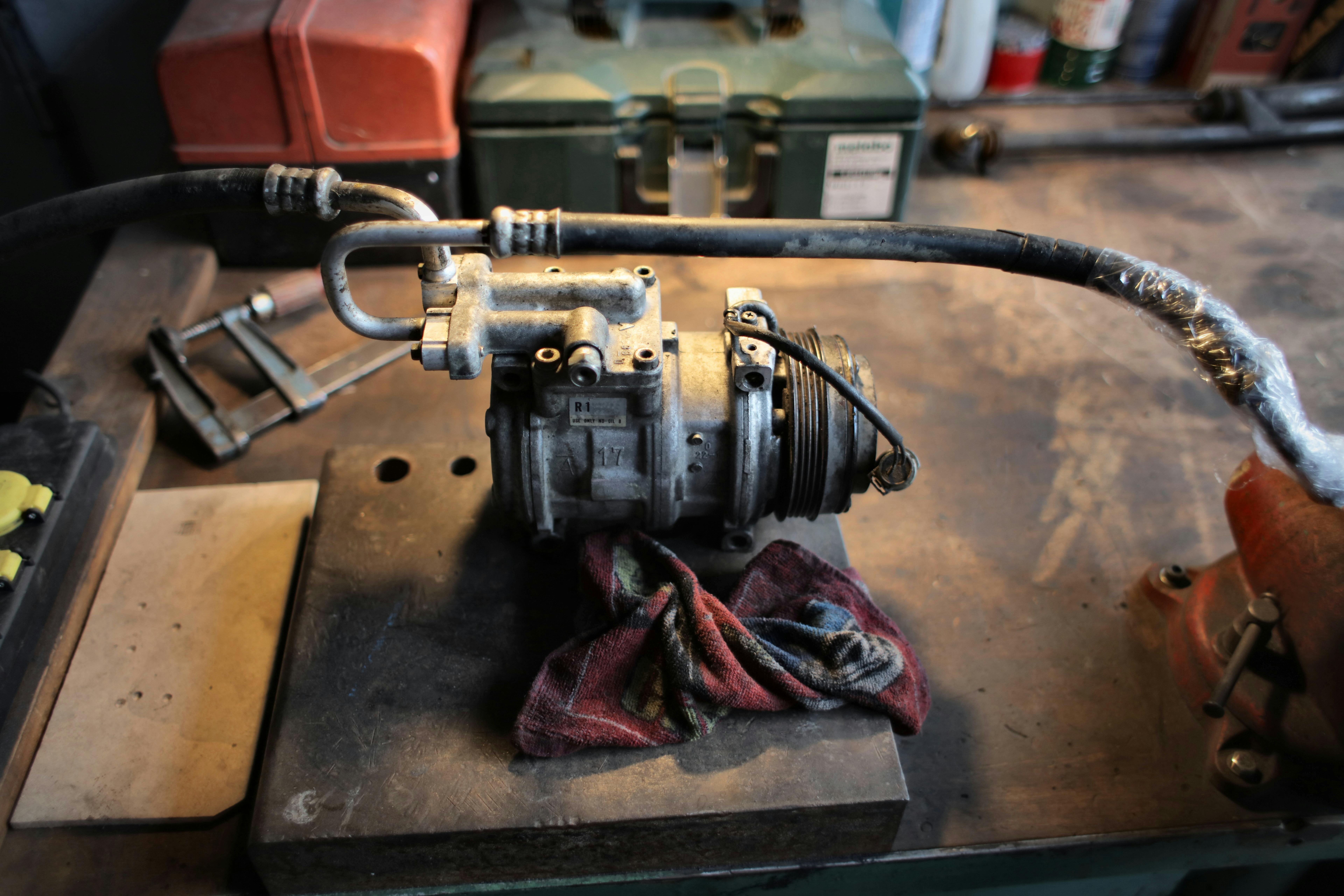Earth’s Moon is the largest and brightest object in the star-studded night sky. It’s a lovely, lovely companion world, the fifth-largest moon in our Solar System. Earth’s Moon is mysterious and striking, an ancient symbol of love, fleeting beauty, and that which is feminine. But where did our Moon come from?
Earth’s Moon is our closest neighbor. More than 100 moons orbit the eight major planets in our Solar System. Most of them are frigid worlds, made mostly of ice and some rocky material, that revolve around the giant planets that inhabit the outer reaches of our Solar System: Jupiter, Saturn, Uranus, and Neptune. The inner Solar System is almost devoid of moons. Our own Moon is the largest in our region of the Sun family. Of the four relatively small and rocky inner planets that orbit closest to the Sun (Mercury, Venus, our Earth, and Mars), Mercury and Venus have no moon, and Mars is surrounded by two miserable and misshapen excuses for moons. Phobos and Deimos. The two Martian moons are quite small and are probably hijacked asteroids from the handheld asteroid belt that revolves around our Sun between the orbits of Mars and Jupiter.
A moon is generally defined as a natural object that is in orbit around a planet. The moon is held in its orbit by the gravity of the host planet, as well as the gravity of the moon itself. Some planets host moons; some don’t.
At least five theories have been suggested to explain how our Moon came to be. The first theory states that the Moon was once part of our own planet, and then somehow sprouted about 4.5 billion years ago, when our Solar System was first forming. The Pacific Ocean basin is the most frequently suggested site for the origin of our Moon. A second theory suggests that the Earth and the Moon formed together from the original nebula that gave rise to our Solar System. The third theory states that the interaction of the earth’s orbit and the solar orbit planetesimals, early in the history of our Solar System, resulted in its breakup. Earth’s Moon then condensed from this debris. planetesimals they were the building blocks of the planets in the early Solar System, and they were rocky, icy, or both. They collided and then joined to form the planets. The fourth theory states that our Moon was actually born elsewhere in the Solar System and was ultimately abducted by our planet when it ventured too close to Earth’s gravitational embrace.
However, the theory that is currently considered to be the most credible is often referred to as the theory giant impact theoryor alternatively (and jokingly), the big hit gold big dip theory. The fundamental suggestion of this theory is that a hypothetical Mars-sized protoplanet, called Theia by astronomers, crashed into primordial Earth billions of years ago. The catastrophe resulted in a portion of the ancient Earth’s crust being shot up into space, lifting myriad moons into the sky. Some of this debris was eventually captured in orbit around ancient Earth around 4.5 billion years ago, where it was eventually pulled by the force of gravity to become our beautiful Moon.
most of giant impact theory was first introduced in 1975 by Dr. William K. Hartmann and Dr. Donald R. Davis of the Institute of Planetary Sciences in Tucson, Arizona. His theory is based on geological samples collected by Apollo astronauts when they made their historic trip to the Moon in July 1969. The oxygen isotopes found within the assembled lunar rocks proved to be nearly identical to those on our own planet! Year isotope refers to each of two or more types of the same element that contain the same number of protons but different numbers of neutrons in their atomic nuclei. In addition, other evidence strongly suggests that the Moon is made mostly of the same material found in Earth’s mantle.
Evidence presented in the October 18, 2012 issue of the journal Nature adds even more credibility to the big hit script. Planetary scientists examining lunar rocks collected during the NASA mission Apollo Moon landing missions, as well as a meteorite known to be a piece of the Moon, looked for traces of zinc in lunar samples. The ratios of heavy to light isotopes were revealed to be higher than on our planet. This indicates that the Moon experienced a violent evaporation event when our Solar System was first forming. This catastrophic event may well have been the ancient and violent collision of a world the size of Mars…Theia–with primordial Earth. The study clearly provides additional evidence that Earth’s Moon formed in the wake of a gigantic impact, the scientists explained.
When our Moon was still forming, it is believed to have sported a global, fiery magma ocean that was hot enough to vaporize zinc. A catastrophic impact is one of the few events that would be capable of generating that immense amount of heat. A second prediction of the big hit is that the heavier isotopes would exist in greater abundance. This is because they would condense at higher temperatures.
Dr. Frederic Moynier, Assistant Professor of Earth and Planetary Sciences at Washington University in St. Louis, Missouri, told reporters on October 17, 2012 that “What we found is that depletion [of lighter isotopes] zinc is probably due to evaporation.” Dr. Moynier is one of the co-authors of the study.
Dr. Moynier, the article’s lead author, Dr. Randal Paniello, and Dr. James Day of the Scripps Institution of Oceanography in California, discovered that the ratio of zinc-66 to zinc-64 contained in lunar rocks is approximately three to four times greater than that found on Earth or on the planet Mars. On Mars it is 0.27 parts per thousand, while on Earth it is 0.25 parts per thousand. In contrast, on the Moon, it was a difference of 1.3 to 1.4 parts per thousand, a very significant difference!
Almost all lunar samples collected from the Moon showed similar ratios of light and heavy isotopes, even though they were collected from different regions scattered across the Moon.
The extremely high temperatures suggest that the water evaporated. This further indicates a depletion of other volatiles, which are elements such as sulfur, chlorine, and hydrogen, which vaporize at much lower temperatures. However, it should be noted that there are several studies that suggest that water is still present in some lunar rocks.
Exactly how much water and other volatiles does Earth’s Moon contain remains a key question. Planetary scientists who suggest there is water in the lunar mantle say the Moon may have large amounts of these chemicals. However, other planetary scientists argue that the volatiles are found mainly in the upper layers of the Moon’s soil, carried by meteorite impacts, and that they mostly date from the ancient era of lunar formation.
The water and volatiles were likely the result of the impacts and the solar wind, Moynier told reporters in October 2012.”[The results] They show that all this water that they found on the face of the Moon is secondary water,” he added.
Yet another model, devised by Dr. Matija Cuk and Dr. Sarah Stewart of Harvard University in Cambridge, Massachusetts, explains the amazingly similar chemistry of our own planet with its beautiful Moon. A giant impact on a rapidly spinning Earth hurls Earth’s material into orbit, giving birth to a Moon that’s just like ours: iron-free, with a composition similar to Earth’s mantle. After the impact, the previously rapidly spinning Earth slows down due to a gravitational dance between the Moon and the Sun, called a dance. orbital resonance.
Lately, the big hit The theory has lost some credibility because Earth and its Moon have been shown to be “isotopic twins.” The original big hit theory predicted that most of Earth’s Moon was made up of Theia-material rather than Earth material, and therefore should have shown a different isotopic composition.
Therefore, the giant impact theory he was in trouble because, although he could match the mass of the Moon and the rotation rates of the Earth and its Moon, he could not correctly predict the lunar chemical composition. Currently, the tides between the Earth and the Moon have slowed down the Earth’s orbit and have also pushed the Moon further and further away. In the early days of our Solar System, the Moon was much closer to our planet than it is today: a gigantic companion world that took up a large part of the sky. Ancient Earth had a mere five hour day when the Moon was born. If the Earth had a rotation of just five hours after impact, the collision of Theia it couldn’t have launched enough things from Earth into orbit to create a Moon with chemistry matching Earth’s.
However, Cuk and Stewart were able to show that if Earth’s initial angular momentum were higher, corresponding to a two to three hour Earth day, a catastrophic impact could launch enough of Earth’s stuff into orbit to create a Moon that would have the same isotopic composition as Earth. With this extremely fast rate of rotation, it’s much easier to put things on Earth into orbit as a result of a giant impact.
Cuk and Stewart also calculated that the ancient Earth could well have had such a short period of rotation after the collision and then achieved its present much slower rate of spin by transferring angular momentum to the Sun via resonance event awakening resonance refers to the gravitational dance between Earth’s orbit around the Sun and the Moon’s orbit around Earth. This paper has revealed for the first time that ancient Earth may have had a spin rate of only two to three hours after the giant impact.
but where Theia go after it crashed into ancient Earth, sparking the formation of our lovely big Moon? That is the question! No trace of this hypothetical ancient world has ever been observed, and it has not been for a lack of trying. Yew Theia or its remains and relics are ever observed by astronomers, it will finally explain the mysterious origin of Earth’s luminous and captivating companion.


